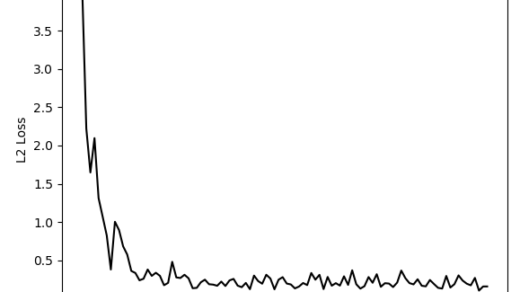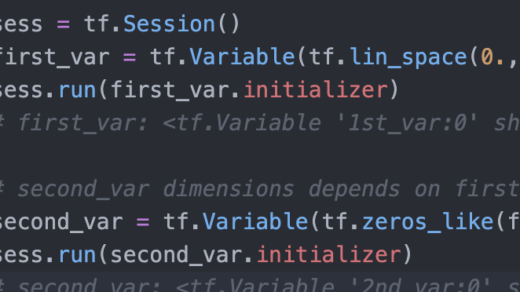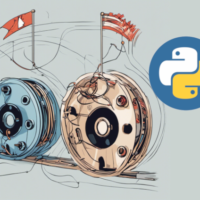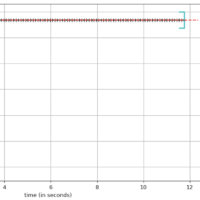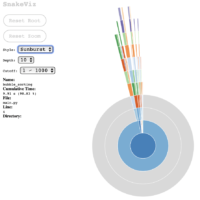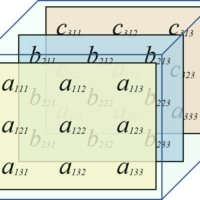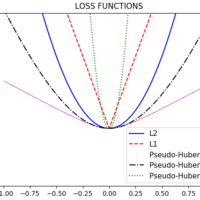TensorFlow has several high-level libraries allowing us to reduce time modeling all with core code. TF Estimator makes it simple to create and train models for training, evaluating, predicting and exporting. TF Estimator provides 4 main functions on any kind of estimator:
- estimator.fit()
- estimator.evaluate()
- estimator.predict()
- estimator.export()
All predefined estimators are subclasses of tf.estimator.Estimator. You can see specific details of predefined estimators in TensorFlow’s Website | Estimators. Take in account that previous version based on tf.contrib.learn.Estimator has been deprecated.
As it is defined by TensorFlow Team, “Pre-made Estimators enable you to work at a much higher conceptual level than the base TensorFlow APIs”, what means it creates the graph for you. The workflow on using Estimators API is as follows:

Let’s see a simple example using tf.estimator.EstimatorSpec:
import os
import tensorflow as tf
from tensorflow.examples.tutorials.mnist import input_data
tf.reset_default_graph()
# 2. Write your function to import data
mnist = input_data.read_data_sets(os.path.join('.', 'mnist'), one_hot=False)
x_train = mnist.train.images
y_train = mnist.train.labels
x_test = mnist.test.images
y_test = mnist.test.labels
n_classes = 10
batch_size = 100
n_steps = 1000
learning_rate = 0.01
def model_function(features, labels, mode):
# 1. Find the most suitable estimator
# EstimatorSpec fully defines the model to be run by an Estimator.
espec_op = tf.estimator.EstimatorSpec
# 3. Define features to be used in data
# features is a dict as per Estimator specifications
x = features['images']
# define the network
layer_1 = tf.layers.dense(x, 32)
layer_2 = tf.layers.dense(layer_1, 32)
logits = tf.layers.dense(layer_2, n_classes)
# define predicted classes
predicted_classes = tf.argmax(logits, axis=1)
if mode == tf.estimator.ModeKeys.PREDICT:
espec = espec_op(mode, predictions=predicted_classes)
else:
# define loss and optimizer
entropy_op = tf.nn.sparse_softmax_cross_entropy_with_logits
loss_op = tf.reduce_mean(entropy_op(logits=logits, labels=tf.cast(labels, dtype=tf.int32)))
optimizer = tf.train.GradientDescentOptimizer(learning_rate=learning_rate)
train_op = optimizer.minimize(loss_op, global_step=tf.train.get_global_step())
# define accuracy
accuracy_op = tf.metrics.accuracy(labels=labels, predictions=predicted_classes)
espec = espec_op(mode=mode,
predictions=predicted_classes,
loss=loss_op,
train_op=train_op,
eval_metric_ops={'accuracy': accuracy_op})
return espec
# 4. Instantiate your selected estimator
model = tf.estimator.Estimator(model_function)
# 5. Training!
train_input_fn = tf.estimator.inputs.numpy_input_fn(
x={'images': x_train},
y=y_train,
batch_size=batch_size,
num_epochs=None,
shuffle=True)
model.train(train_input_fn, steps=n_steps)
# 6. Use the trained estimator
# evaluate the model
eval_input_fn = tf.estimator.inputs.numpy_input_fn(
x={'images': x_test},
y=y_test,
batch_size=batch_size,
shuffle=False)
metrics = model.evaluate(eval_input_fn)
print(metrics)The output is as follows:

There are many other predefined Estimators, I will add more examples in the future.
See you next time!

